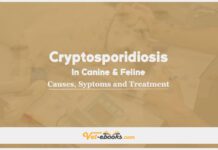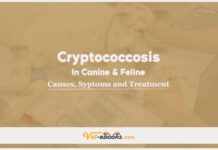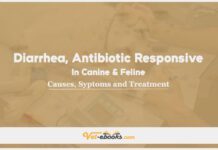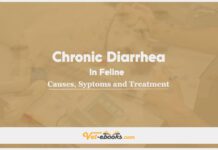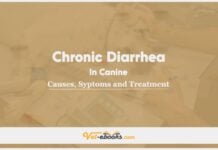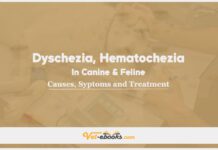Constipation and Obstipation In Canine and Feline: Causes, Symptoms and Treatment
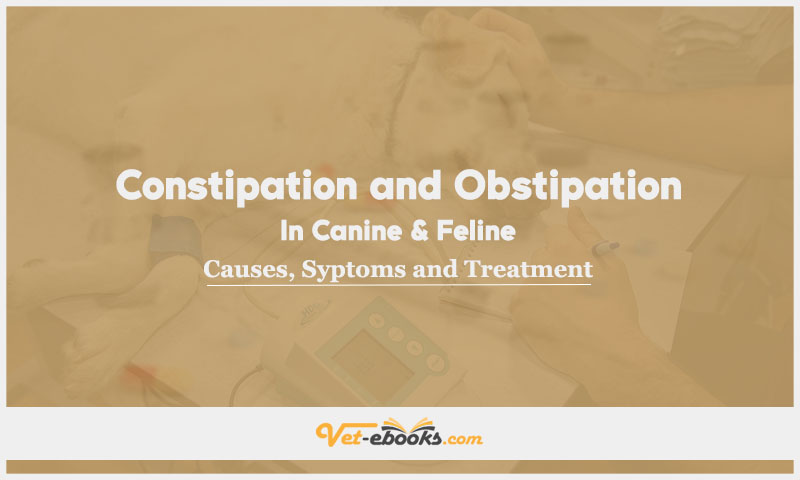
Contents
hide
Overview
- Constipation is the expulsion of solid or dried fecal matter along with infrequent, difficult, or incomplete bowel movements.
- This does not suggest any abnormality in motility or impairment of function.
- Obstipation refers to severe and persistent constipation that has been unresponsive to multiple successive treatment attempts.
- For those experiencing obstipation, the act of defecation becomes unachievable.
Causes of Constipation and Obstipation In Canine and Feline
Causes
- Dietary such as bones, hair, extraneous substances, consumption of an excessive amount of dietary fiber, or insufficient consumption of water.
- Environmental such as absence of physical activity, environmental factors influencing health hospitalization, unsanitary litter box conditions, or a lack of capacity to ambulate.
- Pharmaceutical such as anticholinergics, antihistamines, opioids, barium sulfate, sucralfate, antacids, kaopectolin, iron supplements, and diuretics.
- Painful defecation (dyschezia), caused by several anorectal diseases (anal sacculitis, anal sac abscess, perianal fistula, anal stricture, anal spasm, rectal foreign body, rectal prolapse, and proctitis) or many traumatic injuries (fractured pelvis, shattered leg, dislocated hip, perianal bite wound or laceration, and a perineal abscess).
- Mechanical obstruction, due to extraluminal conditions (healed pelvic fracture resulting in a narrower pelvic canal, prostatic hypertrophy, prostatitis, prostatic neoplasia, intrapelvic neoplasia, and sublumbar lymphadenopathy) or intraluminal and intramural conditions (neoplasia or polyps in colon or rectum, rectal strictures, rectal foreign bodies, rectal diverticula, perineal hernias, rectal prolapse, and congenital defects such as atresia ani).
- Neuromuscular disease may be a central nervous system disease (paraplegia, spinal cord disease, intervertebral disc disease, and cerebral diseases such as lead toxicity or rabies), a peripheral nervous system disease (dysautonomia, sacral nerve illness, and sacral nerve injuries, such as tail fracture or pull injury) or malfunctioning of colonic smooth muscle (idiopathic megacolon in cats).
- Metabolic and endocrine diseases may be impaired colonic smooth muscle activity (hyperparathyroidism, hypothyroidism, hypokalemia, which is commonly associated with chronic renal failure, and hypercalcemia) or debility (overall muscle weakness, dehydration, and neoplasia).
Risk factors
- Manx cats may exhibit a predisposition due to vertebral (sacral) disorders.
- Drugs (anticholinergics, narcotics, and barium sulfate).
- Metabolic disorders that cause dehydration.
- Feline dysautonomia.
- Intact male due to perineal hernia or benign or infectious prostatic illness.
- Castrated male experiencing prostatic neoplasia.
- perianal fistula.
Pathogenesis of Constipation and Obstipation In Canine and Feline
- Constipation arises in the presence of any medical condition that hinders the smooth movement of fecal matter along the colon.
- Frequently, the absence of an identifiable underlying cause is observed in feline cases.
- Delayed fecal transit results in the extraction of excess salt and water, leading to the formation of drier fecal matter.
- Dehydration and the potential for toxemia due to fecal matter retention are the main causes of the clinical manifestations seen in patients.
- During constipation, peristaltic contractions may get stronger at first, but they eventually weaken because smooth muscle breaks down after long-term overdistension.
Symptoms (History & Physical Examination) of Constipation and Obstipation In Canine and Feline
History
- Decrease in frequency, absence, or discomfort throughout the process of bowel movements.
- Solid, dry feces.
- A limited quantity of liquid feces, characterized by a mucoid consistency, occasionally accompanied by blood, is generated during an extended period of tenesmus.
- Infrequent episodes of emesis, reduced appetite, and/or fatigue.
Physical Examination
- Solidified fecal matter is obstructing the colon.
- Abdominal distention can be a consequence of severe impaction.
- The results of other investigations depend on the root cause.
- During a rectal examination, various findings may be observed, including the presence of a mass, stricture, perineal hernia, anal sac illness, foreign body or material, prostatic enlargement, or a restricted pelvic canal.
Diagnosis of Constipation and Obstipation In Canine and Feline
1- From History and Physical Examination
2- Diagnostic Procedures
CBC/BIOCHEMISTRY/URINALYSIS
- Typically unremarkable.
- Hypokalemia and hypercalcemia may be present.
- Dehydrated patients exhibit elevated packed cell volume and total protein levels.
- Notable elevation in the number of white blood cells in patients experiencing severe obstipation as a result of bacterial or endotoxin translocation, abscess formation, perianal fistula, or prostatic illness.
- Pyuria and hematuria are commonly observed in patients diagnosed with prostatitis.
OTHER LABORATORY TESTS
- In the case of a hypercholesterolemic patient, it is advisable to do a thyroid panel in order to eliminate the possibility of hypothyroidism.
- If the patient presents with hypercalcemia, it is advisable to consider conducting a parathyroid hormone assay.
Imaging
- Abdominal radiography to assess the extent or severity of colonic impaction.
- A foreign object may be found in the colon or rectum, a mass may be found in the colon or rectum, the prostate gland may have grown, the pelvis may have broken, the hip may be dislocated, or perineal hernias may manifest.
- If pneumocolon radiography is done after enemas are used to clean the colon, it might be easier to figure out what kind of mass or stricture is inside the intestine.
- Ultrasonography has the potential to assist in the identification and characterization of extraluminal masses and prostatic diseases.
3- Differential Diagnosis
- Dyschezia and tenesmus, which are caused by conditions such as colitis or proctitis, are characterized by a higher frequency of defecation attempts and the generation of tiny quantities of liquid stools, including blood and/or mucus. Rectal inspection indicates the presence of diarrhea and the absence of solid stool.
- Stranguria, which is a result of illnesses like cystitis or urethritis, differs from constipation in a number of ways. Hematuria and unusual urinalysis results like pyuria, crystalluria, and bacteruria are frequently present with stranguria.
Treatment of Constipation and Obstipation In Canine and Feline
General:
- Attempt to eliminate or improve any underlying factor, if feasible.
- Stop the use of any medications that may induce constipation.
- In the event of obstipation and/or dehydration, it may be necessary to consider the option of treating the patient as an inpatient.
Medications:
- Emollient laxatives, specifically docusate sodium or docusate calcium (50–100 mg orally every 12–24 hours for dogs) and (50mg orally every 12–24 hours for cats).
- Stimulant laxatives, such as bisacodyl (5 mg/animal orally every 8–24 hours).
- Saline laxatives refer to an isosmotic combination of polyethylene glycol and poorly absorbed salts.
- These laxatives are supplied in small, continuous doses by a nasoesophageal tube over 6 to 12 hours.
- Lactulose (1 mL per 4.5kg of body weight orally) every 8 to 12 hours until the desired effect is achieved.
- Warm water enemas and a small quantity of mild soap or docusate sodium can be included, although they are typically unnecessary.
- Sodium phosphate retention enemas, such as Fleet (C.B. Fleet Co.), should not be used as they produce severe hypocalcemia.
- Suppositories serve as an alternative to enemas and can be administered using glycerol, bisocodyl, or docusate sodium preparations.
- Motility modifiers, such as cisapride, are used to enhance colonic motility (0.1–0.5 mg/kg orally every 8–12 hours for dogs) and (2.5–7.5 mg/cat orally every 8–12 hours).
Some Notes:
- Lubricants such as mineral oil and white petrolatum are not advised for use due to the potential risk of deadly lipid aspiration pneumonia, primarily attributed to their lack of taste.
- Cisapride and cholinergics may be utilized with caution but should be avoided in cases of obstructive processes.
- It is advisable to refrain from utilizing metoclopramide due to its lack of impact on the colon.
Tip
Do You Want To Increase Your Veterinary Knowledge and Practical Skills?
You Can Now Browse and Download +3000 Books For Veterinary Professionals & Students Online.
Download Veterinary Books

